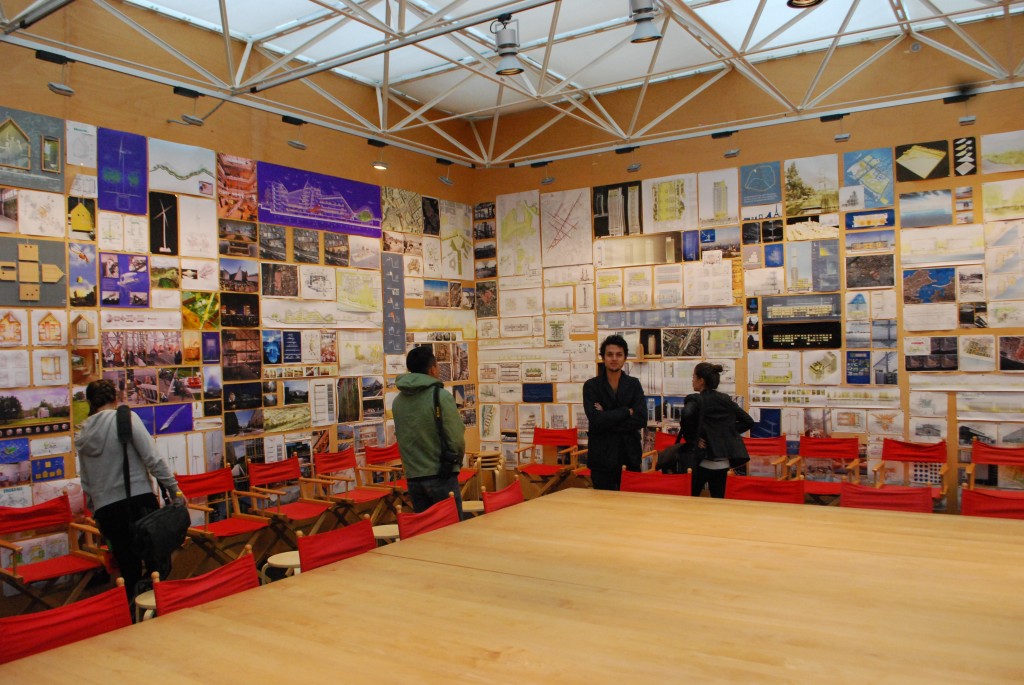Our second largest trip was centered around three major cities in Northern Italy. Como, not actually a city, is a beautiful lake town situated very close to the tip of Switzerland. Milano, just due south is the largest and most important city in Northern Italy, and Genova is Venice’s medieval rival on the opposite site of the Italian Peninsula. Our trip started with a beautiful bus ride from Rome to Milano. We made a couple pit stops, one of the more prominent was the Chiesa dell’Autostrada del Sole. This church was built to commemorate the deaths associated with the construction of the Autostrada del Sole, the road on which we rode to the Northern Provinces. It was situated just off the road and was a beautiful sculptural building of concrete and copper. It was somewhat ironic to be named the “church of the highway” as it was very confusing for our bus driver to navigate us towards the church. it took us about a half-hour just to get in the correct orientation to enter the church grounds, although it was situated just off the highway. From here we headed to Como.
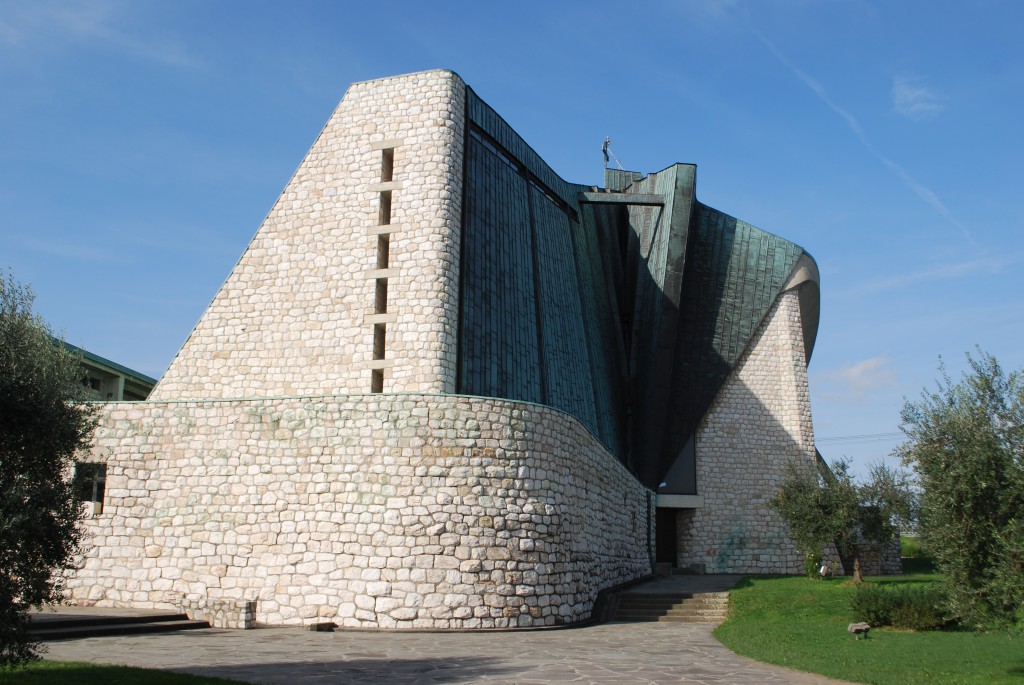
We hit Como just as the sun was setting to see some of Giuseppi Terragni’s most famous buildings. We began with the Casa del Fascio, touted by many as one of the best examples of italian modernism. Its facades are multi-layered and very dimensional, telling of the volumes and voids that lie within the interior of the building. This is one of the more informative buildings for architects and we read a few texts on the bus to better understand the work before we encountered it. This was one of my favorite sites of the entire trip and I imagine the locals often wonder why large groups of students are drawing and photographing this government building in their town. We seemed to be a little of a nuisance, covering the entire sidewalk, having architectural discourse. We ended the evening on the coast of the lake in Como and then headed to our lodging in Milan. It was halloween night when we arrived and very entertaining to see kids and adults alike running around in costumes headed to their respective parties. I was unaware that halloween was even celebrated in Italy, so it was nice to have a little taste of home so far away.
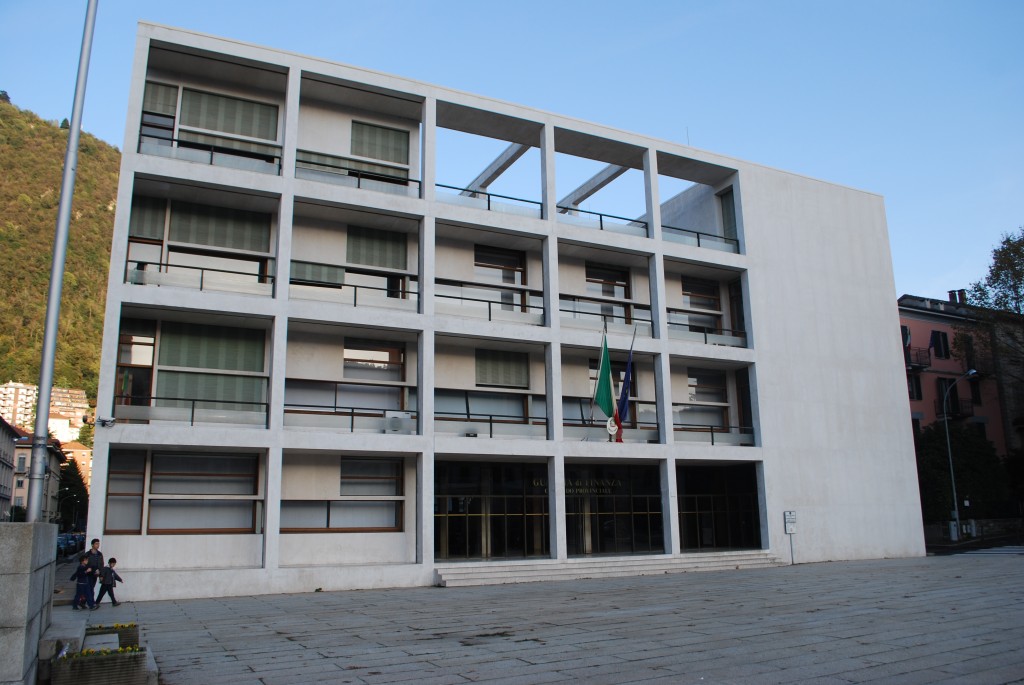
Our first day in Milan began with a beautiful morning walk through the centro storico and many of Milan’s most impressive landmarks. Milan is a classic northern Italian town. In contrast to the south the north was much more successful in industrializing itself and one can tell just in the public landmarks and spaces that have been created. The Milan Duomo is the most beautiful cathedral I’ve ever been to (and this includes St. Peter’s) and as an added bonus, the entire roof is a public piazza offering beautiful views of Milan. Just to the left of the famous cathedral is the Galleria Vittorio Emmanuale which is the most pristine example of a covered shopping galleria in Italy. It is also, incidentally, the home of the flagship Prada store and the first Prada store as well which Fratelli Prada founded back in 1913. The original store is still there and looks as though you have time traveled back to the turn of the century. Milan differs from most Italian cities in its urbanization as well. The city actually has a modern skyline and many great works of modern architecture that we were able to explore later that day. The next day was spent on the bus exploring some other great modern/postmodern and contemporary works on the periphery of Milan, including an Aldo Rossi housing unit, a brand new Zaha Hadid housing complex, and the Milan Trade Fair by Massimiliano Fuksas. From here, the architects headed to Genova, while the artists trained to Venice.
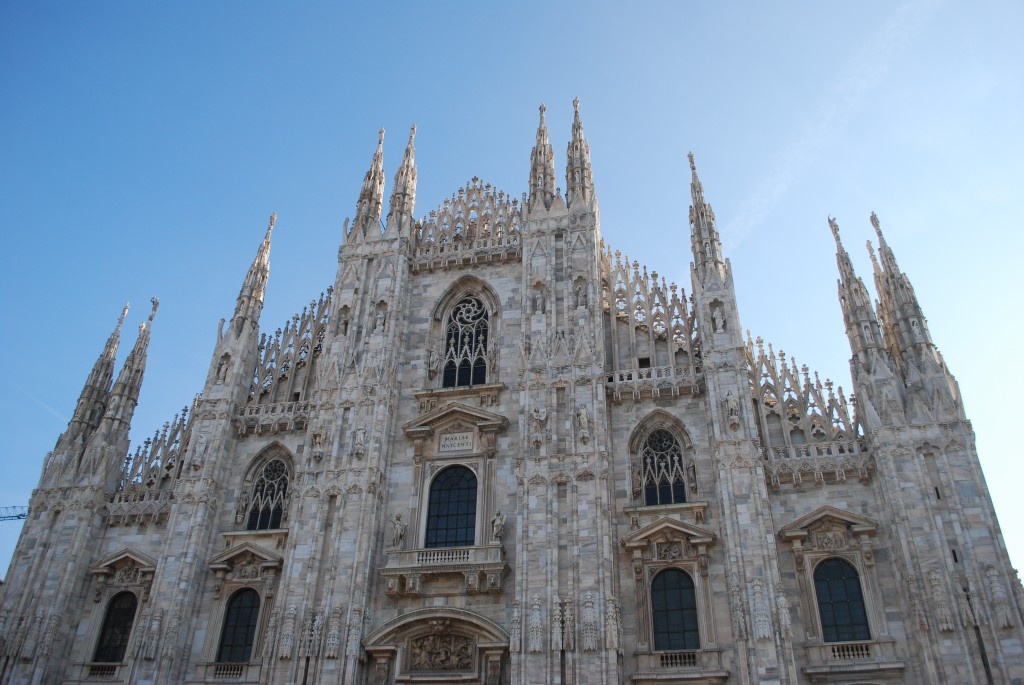
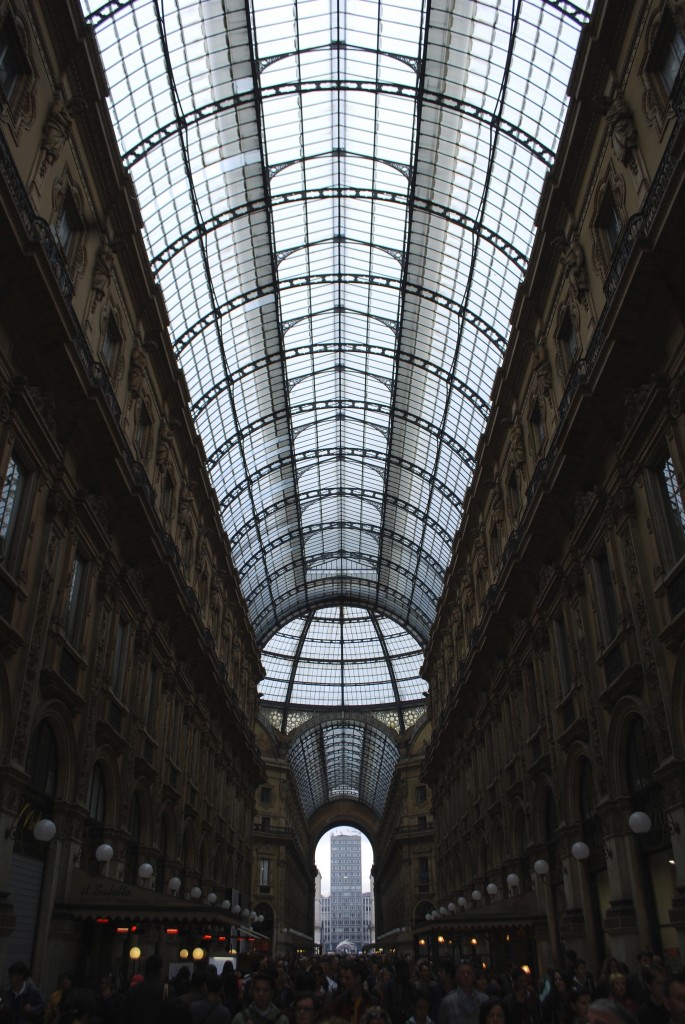
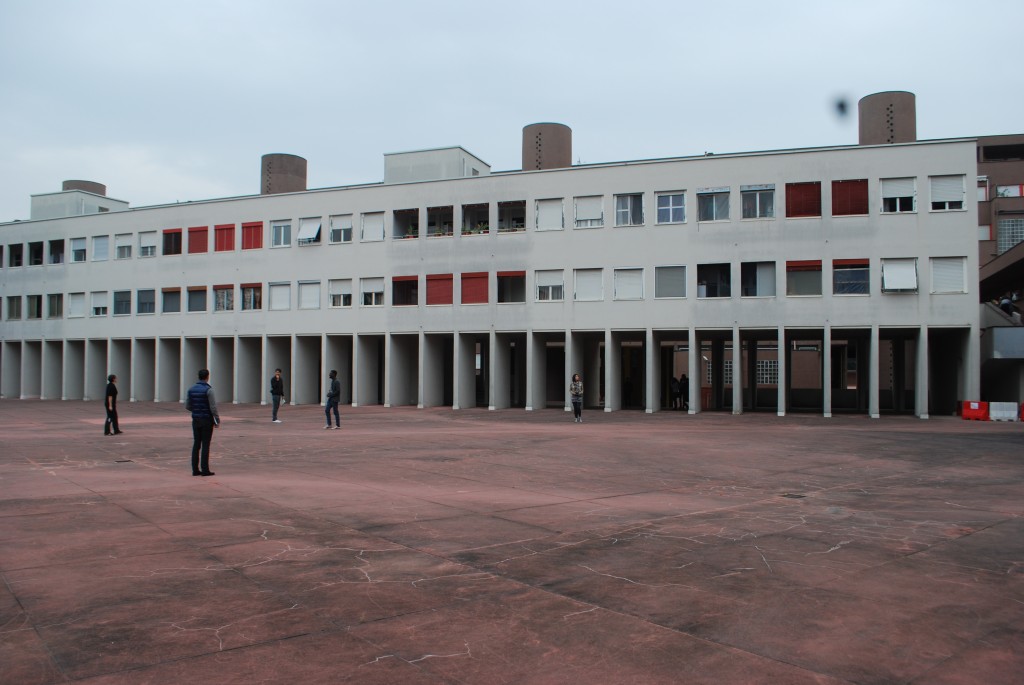
Genova was Venice’s main shipping rival in Italy and still boasts a huge shipping industry. The city is home to Renzo Piano and many of his first public projects are sited here. It is a very different city that defies categorization with other Italian cities – not entirely northern, not southern, but really more of a Mediterranean port city with beautiful topography. The city spreads across many sloping hills, and, in many cases, cliffs. Overall I have to say that I was expecting a lit less from Genova than I got; it ended being very beautiful and rich in architectural history. The center of the city is still largely preserved and has some beautiful examples of medieval Italian architecture. Genova is known for its specific style of building facade known as the painted facade. These facades were beautifully decorated and looked much like a normal Italian renaissance facade, but they are entirely two dimensional. It was always funny to be surprised when you realized that the building you were looking at actually was two-dimensional, and it happened quite a lot in this city. My favorite time spent in Genova was on the Strada Nuova, the street of palaces. The street left me speechless, so I’ll let Charles Dickens explain; excerpt below from his travelogue Pictures from Italy:
“…When shall I forget the Streets of Palaces: the Strada Nuova and the Strada Balbi! or how the former looked one summer day, when I first saw it underneath the brightest and most intensely blue of summer skies: with its narrow perspective of immense mansions, reduced to a tapering and most precious strip of brightness, looking down upon the heavy shade below! The endless details of these rich Palaces: the walls of some of them, within, alive with masterpieces by Vandyke! The great, heavy, stone balconies, one above another, and tier over tier: with here and there, one larger than the rest, towering high up—a huge marble platform; the door-less vestibules, massively barred lower windows, immense public staircases, thick marble pillars, strong dungeon-like arches, and dreary, dreaming, echoing vaulted chambers: among which the eye wanders again, and again, and again, as every palace is succeeded by another- the terrace gardens between house and house, with green arches of the vine, and groves of orange-trees, and blushing oleander in full bloom, twenty, thirty, forty feet above the street—the painted halls, mouldering, and blotting, and rotting in the damp corners, and still shining out in beautiful colours and voluptuous designs…”
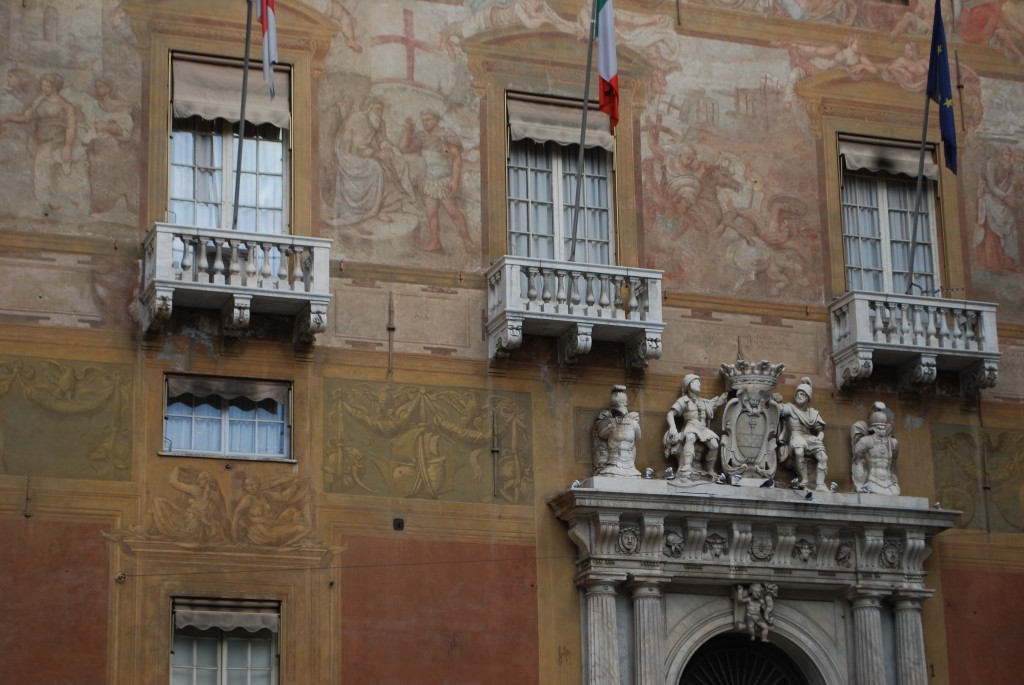
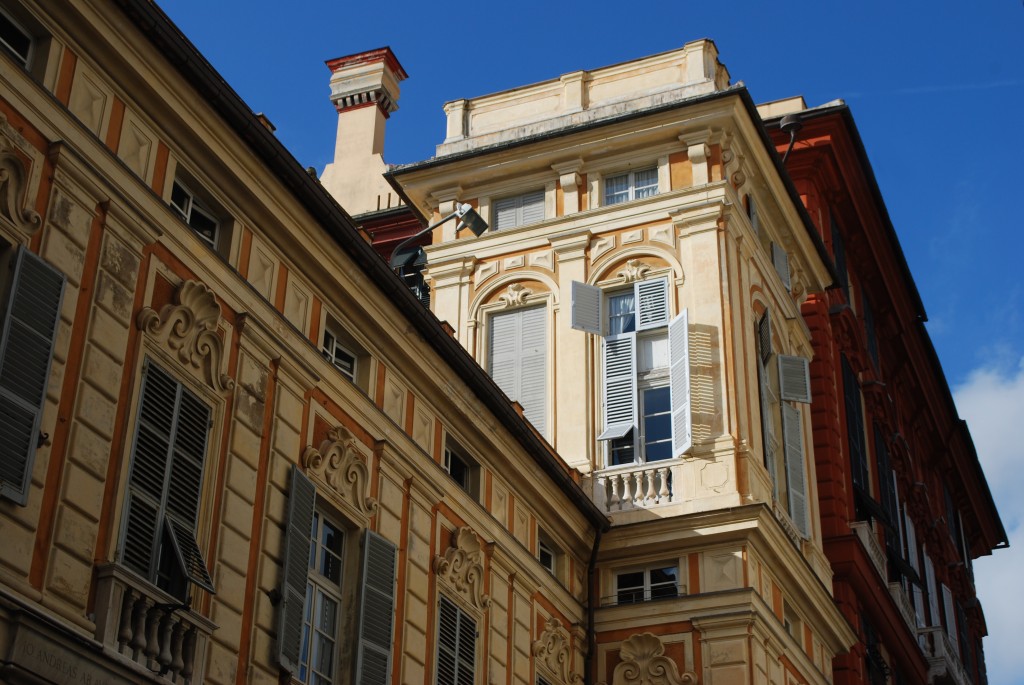
We spent most of one of our afternoons on this beautiful street that included great examples of Italian Palazzi, one of the best museums in Genova and beautiful panoramic view from the top of the gables of one of the old mansions. This street is the testament to Genova’s rich maritime history and truly why it is a contender to Venice. The final day we left Genova to see Renzo Piano’s building workshop located a couple miles south of the city on a rocky coastal site. The Foundation had beautiful examples of his past works as well as drawings of recently completed and upcoming works that the studio is completing. Genova may seem like an odd place to center a world-famous architecture firm, but Piano was born there in Genova so he keeps part of his practice stationed there. We unfortunately did not get to see his famous studios, sited farther up the hill, but nonetheless it was very inspiring to see such great examples of contemporary architecture as we left the north and headed back to Rome.
